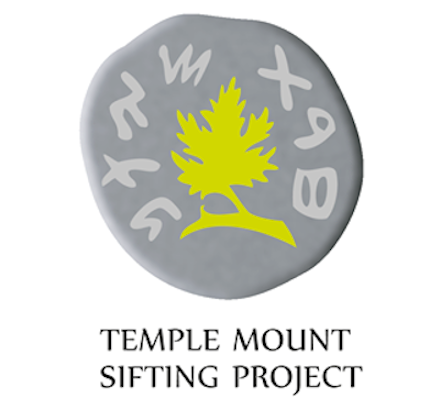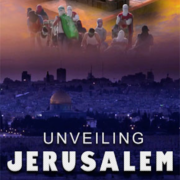Response to Article in Times of Israel
Last Friday, an article was published in the Times of Israel, a news site popular among American Jews. We were saddened to see that even though we spent a great deal of effort informing the reporter, Ilan Ben Zion, about the significance of finds and the new understandings we have following their discovery, he chose to focus on the issue of the project’s scientific value and even interviewed three individuals who claimed that our research has no archaeological value. In addition, the report contains many factual errors and misunderstandings.
Please see our methodology page for more information.
An uninformed reader might come away with the impression that there is a wide ranging scholarly dispute over the archaeological validity of the project, despite the fact that since our first publication in 2006, not a single article has been published in any archaeological journal that called into question our methodology or questioned the scientific validity of the project.
Ben Zion interviewed Prof. Israel Finkelstein, who has a personal issue with Dr. Gabriel Barkay, and has never set foot in the Sifting Project site or bothered to investigate our research methods. In our third preliminary report, we’ve addressed extensively the issue of the provenance of the finds, and explained in detail how we know the earth came from the Temple Mount, where on the Temple Mount it came from, and just what exactly can and can’t be learned from artifacts removed from their original context. It is quite clear that none of the responders interviewed in the article has bothered reading the report, much less visited the site or attempted a scholarly discussion over the project’s methodology.
The article contains many factual errors, so we might give Prof. Finkelstein the benefit of the doubt and assume he was misquoted. However, if the quotes are true, then the ridiculous notion that the finds might not originate in Jerusalem merits no response. As for the claims based on artifacts which supposedly weren’t discovered are quite premature, since only a small fraction of the finds have been published so far, and we are still hard at work preparing the discoveries for proper scientific publication.
It should be noted that Yonathan (Yoni) Mizrachi, another individual interviewed by Ben Zion,was an IAA archaeologist until he was fired nine years ago. Following that, he applied for a job with Eilat Mazar’s excavations in the City of David, and later he applied for a position in our project. Following the interview, we rejected him due to his inadequate knowledge of archaeological material from Jerusalem. About one year later, he responded to an initiative by the Norwegian-supported Ir-Amim foundation to establish the Emek Shaveh, a political organization aimed at attacking the any Israeli archaeological excavations conducted beyond the 1967 borderline. It is to be lamented that the article gives the impression that Mizrachi (who does not hold the title of Dr.) is an influential archaeologist, when, if fact, he is an individual that represents a political organization.
The only interviewee that spoke to-the-point and is worthy of a response is Professor Marwan Abu-Khalaf, who claimed that the area from which the earth was removed was an Ottoman dump, and questioned our ability to glean information from soil without clear stratification. In our published articles we’ve already addressed these issues, including the well-known fact that the Ottoman finds come from a local dump – this being a good thing, since dumps provide the richest archaeological data from periods with no destruction phases.
Dr. Barkay, in the article, appears to respond to the claims made against the project by the three interviewees. In reality he was unaware that the reporter would contact these individuals. Dr. Barkay’s comments that seem to be answers to the interviewee’s claims, were, in fact, quotes from general information that were given to Ben Zion regarding different issues.
In addition, Ben Zion gives an account of the contents of the introductory presentation given to visitors at the Sifting Project, and reports that there was no mention of the “Islam or Arabs, and solely emphasized the Jewish connection to the Temple Mount”. This is completely false. The reporter listened only to the beginning of the presentation, and then left due to a phone call. The lecturer was not an archaeological student, but an archaeologist with a PhD, who always emphasizes equally all the historical periods of the Temple Mount. Incidentally, he holds a political view that is totally opposite from what the reporter tried to associate with him.
If the journalist had any qualms over the scientific or archaeological merit of the project, the correct course of action would have been to approach archaeologists that have neither a personal nor a political agenda, and ask for their thoughts.
Discover more from The Temple Mount Sifting Project
Subscribe to get the latest posts sent to your email.












We have been there! We have sifted and found a pendant and coins from maybe two thousand years ago? We KNOW the value of the intensive work that you do and we trust that G*d will continue to use you to share His time-released treasures with Israel and all of the world! BE ENCOURAGED!
He is working ALL THINGS, even this critical article, together for YOUR GOOD, because He loves you and you are called according to HIS PURPOSE!
I suspect that those who follow the excellent work of the sifting project weren’t fooled by the article in the ToI. As a Brit who loves Israel, and has a reasonable amateur interest in and knowledge of archaeology, I tend to sift articles like this as you sift your soil – with great care. It was clear that the journalist had an agenda, and attempted (bit failed) to taint your work. Keep going, don’t let them grind you down. One day, in the not to distant future, I hope to visit Jerusalem and spend some time with you. Thank you so much for the updates, which are much appreciated.
Two ways to prevent abuse by those in the media is to record the interview so as not not be misquoted and secondly, more and more veteran journalists will let one read the first draft of the article so as to insure there are no grave errors in the article before its published.
sometimes we do that. This time we didn’t.
Zachi,
If you have the time and interest, might I suggest you create a link on yr recent blog post to the article(s) debunking Dr Finkelstein’s methodology and general expertise in the current issue of the BiblicalArchaeology Review July/August 2014 Vol 40 #4 p 38-41.
Or, perhaps add a sentence or two describing the disputes about his work?
Best wishes
Shoshana Schein
Sent from my iPhone
>
I haven’t seen it yet. I’ll try and get it.